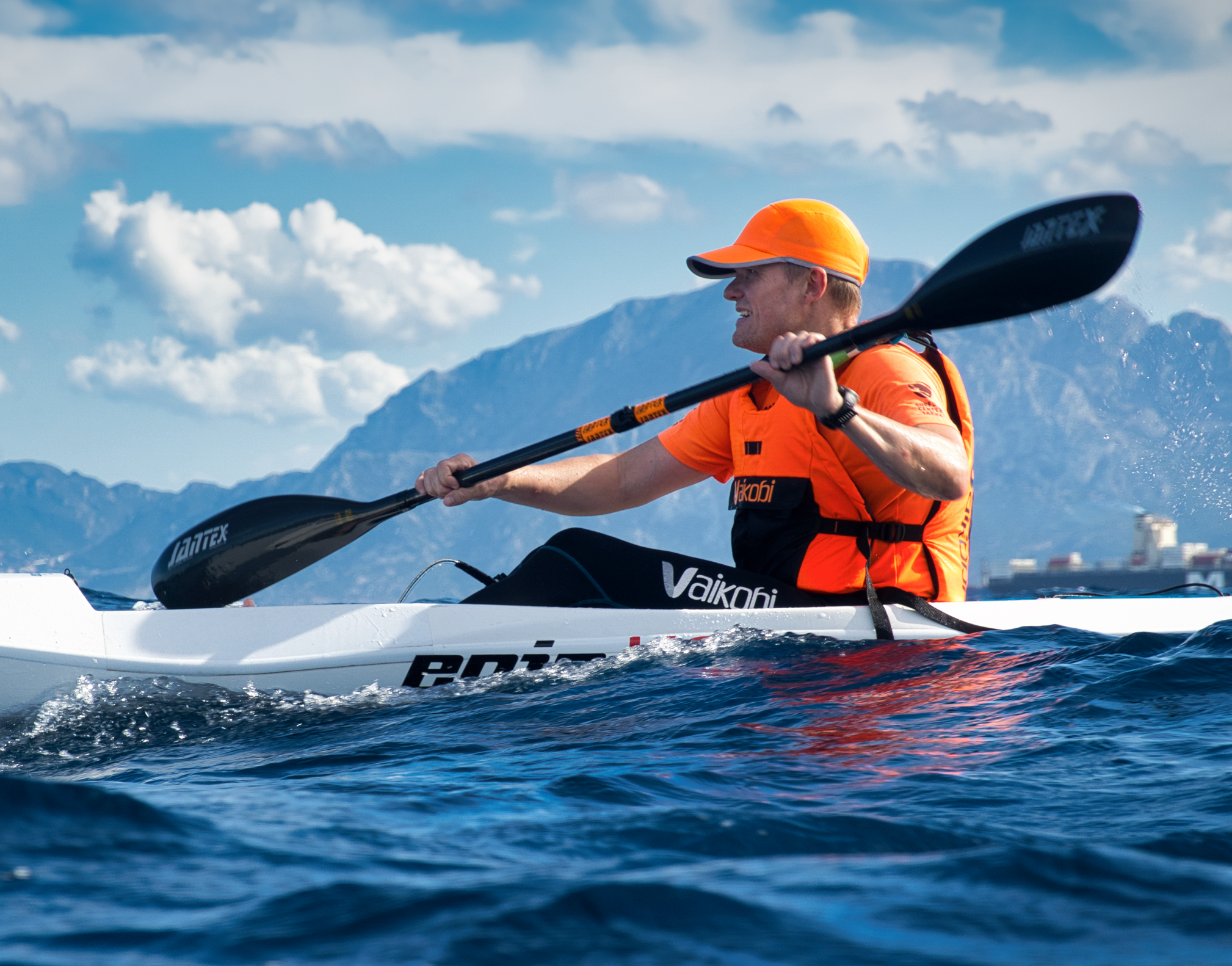How does a PFD work?
PFD life jackets utilise principles of buoyancy to make you float, unassisted. They use buoyant material to trap air and make the wearer less dense than the water they are in, causing the fluid to exert an upwards force. Wearing a life jacket will help distribute a person’s body weight more evenly across the water’s surface. Some life jacket designs favour the distribution of buoyancy around the head, to keep the wearer face up and protect the airway.
How do PFD designs differ?
Inflatable vs non-inflatable
The two most common life jackets on the market are foam and inflatable PFDs. Foam life jackets are preferred among athletes and inshore watersport enthusiasts, whereas inflatable life jackets are commonly worn by boaters and offshore sailors. Inflatable life jackets (usually 150N or higher) require a trigger: either a human pulling on a tab or an automatic chemical reaction upon contact with water. Buoyancy levels, measured in newtons (N), determine the optimal use of your PFD.
50N
A level 50 life jacket is the perfect choice for performance watersport activities held within two nautical miles of the shore. They are ideal for high-mobility sports and allow flexibility while keeping the wearer afloat. They are designed to be comfortable and non-restrictive for active exercise, offering some neck support without the bulky collar. They are typically made of lightweight foam and are suitable for activities where relatively quick rescue is expected. The foam’s placement and distribution are optimised for activities like paddling, sailing and water skiing, where mobility is essential. The Vaikobi range including the VXP Race, Ocean V3, VXI Pro and VX Race, are all ISO 12402-5 (Level 50) certified and are worn high on the chest for effective upper-body flotation.
This life jacket level is typically available in lots of highly visible colours, as the wearer is expected to participate in sports on populated beaches or waterways. Check out the Vaikobi life jackets available in fluro orange, fluro yellow, cyan, and pink.
100N
A 100N life jacket has a high level of buoyancy support and is also designed for use in calm waters. It’s intended for situations where the wearer may have to wait for rescue but can do so in sheltered conditions. If a person is unconscious, this PFD level can assist in rolling them face-up to prevent drowning with a collar. They aren’t suitable for sports that require freedom of movement: you’re best placed with a lower-rated PFD life jacket like the level 50N.
150N
PFDs with a 150N rating are intended for use in all weather conditions including rough seas. They are most used by boaters who experience a range of conditions both inshore and offshore. They have a robust collar to ensure the head will be face-up and out of the water if the wearer is unconscious.
275N
Level 275N life jackets are the highest level of buoyancy that regular boaters can find on the market. They are designed for high-risk offshore activities where rough seas are expected. They are designed to counteract the force of trapped air in the clothing that could prevent a person from rolling face-up. They also have extra buoyancy to counteract the weight of protective clothing and heavy items that boaters could be carrying.
How long does a PFD last?
Knowing when to replace a life jacket is essential. So how long is a PFD good for? For dinghy sailors or kayakers who wear their PFD weekly, life jackets should be replaced after approximately 12-24 months or when they show signs of significant wear. Foam life jackets stored or used less frequently on yachts and larger vessels don’t need replacing as often.
Annual servicing of inflatable PFDs to check that the bladder, CO2 cylinder, reflective tapes, buckles, and straps are in working order is the best way to decide if a replacement is necessary.
How should a PFD be tested?
While life jackets don’t have official expiry dates, there’s an easy way to test whether a foam life jacket has expired by conducting a controlled, in-water test. Read our full article to learn more about whether life jackets have expiry dates.
Step 1: Check for visible signs of wear or damage. Look for tears in outer material, mould, significant discolouration or weak stitching. If these signs are present, replace your PFD.
Step 2: Find a low-risk testing area (e.g. some waist-deep water at a pool or calm beach). Place the life jacket over your body and secure it firmly.
Step 3: Slowly submerge yourself in the water and lift your feet off the sand/pool floor. If you must actively tread water to support yourself, the life jacket is no longer safe. The foam has likely degraded.
Inflatable, or self-inflating life jackets, are best serviced and checked by a professional.
In search of a new life jacket? For all of the best watersport PFD designs visit Vaikobi’s collection.

